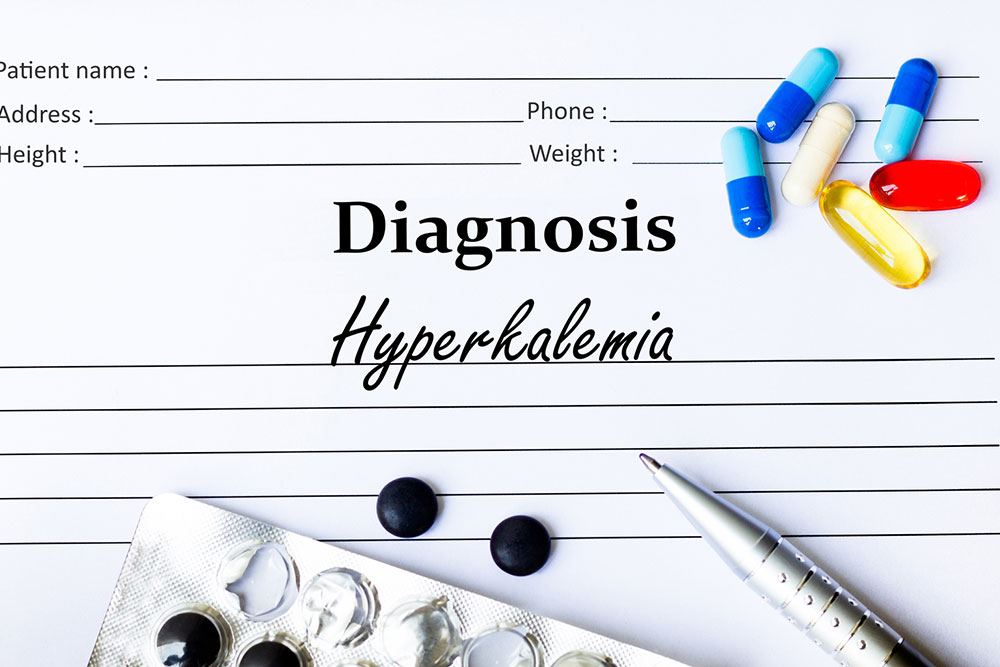Understanding Hyperkalemia: Recognizing Its Symptoms and Prevention Strategies
Hyperkalemia is a serious condition caused by excess potassium in the blood, affecting heart and muscle functions. Recognizing symptoms like muscle weakness, irregular heartbeat, and breathing difficulties can be life-saving. This comprehensive guide explains how to identify hyperkalemia early, treatment options including medications and dietary management, and preventive strategies for at-risk individuals. Quick medical intervention is essential to prevent complications such as cardiac arrest. Regular health checks and awareness can help maintain electrolyte balance and overall health.

Maintaining a proper balance of minerals in the body is essential for overall health and well-being. Among these minerals, potassium plays a crucial role in various physiological functions, including muscle contractions, nerve signal transmission, and regulation of heart rhythm. Although potassium is vital, excess levels can lead to a serious medical condition known as hyperkalemia. This condition occurs when blood potassium levels rise above the normal range, typically between 3.6 and 5.5 mmol/L. Recognizing the signs and symptoms of hyperkalemia early is critical for prompt treatment and preventing potentially life-threatening complications.
Electrolyte balance, especially potassium regulation, is tightly controlled by the kidneys, which filter and remove excess potassium from the bloodstream. When this mechanism becomes impaired due to kidney disease or other health issues, potassium can accumulate to dangerous levels. Hyperkalemia can develop gradually or suddenly, depending on underlying causes. Factors such as medication side effects, chronic kidney disease, dehydration, hormonal imbalances, and certain foods can contribute to elevated potassium levels. It is therefore essential for individuals at risk to monitor their health, recognize symptoms early, and seek medical advice promptly.
Knowing the typical symptoms of hyperkalemia can be life-saving. Mild cases might be asymptomatic or present with vague symptoms, but as levels increase, symptoms become more apparent and serious. The most common signs include:
Breathing difficulties: Shortness of breath can occur even during mild exertion or at rest, reflecting the impact of hyperkalemia on respiratory and cardiac function.
Fatigue and weakness: An unusual sense of tiredness and muscle weakness often indicate disturbances in electrolyte balance affecting muscular strength.
Numbness or tingling: Sensations of numbness, especially in extremities such as hands or feet, may be associated with nerve conduction issues caused by high potassium levels.
Nausea or vomiting: Gastrointestinal discomfort, including nausea, vomiting, or diarrhea, can be symptoms linked to hyperkalemia's systemic effects.
Chest pain: A burning sensation or dull ache in the chest region may be a warning sign requiring immediate evaluation, as hyperkalemia can affect heart muscle function.
Irregular heartbeat: Palpitations, arrhythmias, or other heart rhythm disturbances are among the most serious signs, potentially leading to cardiac arrest if untreated.
If you or someone you know experiences these symptoms, especially if they are sudden or severe, it is crucial to seek emergency medical care without delay. Early diagnosis involves blood tests to measure potassium levels, and treatment aims to stabilize the heartbeat, lower potassium levels quickly, and address the underlying cause.
Management options for hyperkalemia include various medications designed to lower potassium levels effectively. Drugs such as Kalexate (sodium polystyrene sulfonate), VELTASSA, Kionex, Lokelma, and Neut are commonly used to treat hyperkalemia. These medications work by exchanging potassium for other ions in the gastrointestinal tract or promoting its excretion through the kidneys. Additionally, in urgent cases, interventions like dialysis may be necessary to remove excess potassium rapidly.
Alongside medical treatment, dietary modifications play a vital role in managing hyperkalemia. Patients may be advised to limit high-potassium foods such as bananas, oranges, potatoes, tomatoes, and spinach. Hydration and the careful management of medications that can elevate potassium levels (such as certain diuretics, ACE inhibitors, or potassium supplements) are essential components of a comprehensive treatment plan.
Preventive measures are equally important, especially for individuals with chronic kidney disease, heart conditions, or those on medications affecting electrolyte balance. Regular monitoring of blood potassium levels, adherence to dietary restrictions, and ongoing medical supervision can significantly reduce the risk of developing hyperkalemia.
In conclusion, hyperkalemia is a potentially life-threatening condition that requires awareness of its symptoms and immediate medical intervention. Recognizing early signs such as muscle weakness, abnormal heart rhythms, and breathing difficulties can save lives. Advances in medications and regular health screenings make managing hyperkalemia more effective than ever. Always consult your healthcare provider for personalized advice, especially if you are at risk or experiencing symptoms. Timely action is key to preventing severe complications and maintaining cardiovascular and neuromuscular health.





